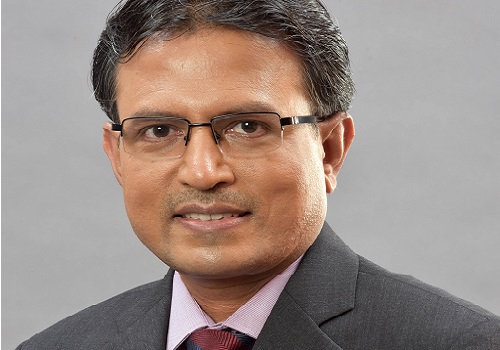Analysis Of Union Budget 2021-2022 By Ajay Mahajan, CARE Rating

Below are Views On Analysis Of Union Budget 2021-2022 By Ajay Mahajan, CARE Rating
The Union Budget announced today is, in our view, indeed a landmark budget and probably took the nation by surprise. Did it meet expectations? Oh sure yes, as the FM has taken a bold step of not procrastinating crucial expenditure at a time when fiscal deficit is already running very high and additional sources for revenues appeared to be very limited.
Instead, the FM has rightly pushed the attainment of the fiscal consolidation objective by a few years to make room to continue to borrow more although it will be lower relative to last year.
Targeting a fiscal deficit of 6.8% and keeping an extended timeline before we move below the 4.5% mark makes a lot of sense as the first priority for the government unequivocally had to be “Growth” in order to get the economy back on its rails post-pandemic. The Budget has been quite focused on sectors that matter the most today which are capital expenditure and health.
Using these two props the Budget has built constructively on its expenditure plans which would have strong backward linkages with the rest of the economy and hopefully create more jobs. While this will be supplemented with the efforts of the states which are anow allowed to run deficits of 4% (with an additional conditional 0.5%) of GDP, we believe that the private sector has to be the main driver which will finally determine the pace of growth
All of this expenditure increase needed innovative ways of financing. The FM has announced so many potential sources of disinvestment & privatization including the proposed public issue of the gigantic state-owned Insurer amongst a slew of measures that are innovative, thoughtful and underscore the new thinking of raising resources from monetization of government owned assets.
The FM spared the individual and corporate taxpayer by not increasing direct taxation rates for them, thereby supporting consumption and investment. However, there have been some targeted changes in customs duty rates which should help the concerned sectors. Hence this one is an intensely growth-oriented budget, focused on investing in capital expenditure – so critically needed for this economy at this juncture.
What we are quite excited about being in a credit rating agency are the announcements relating to the financial sector. Here too there were not too many surprises as the ARC for bad assets of PSBs and the new DFI to be set up were already in the grapevine. We are keen to know how the thrust proposed for the corporate bond market would work out as this has been a challenge to boost liquidity.
Maybe an institutional market maker is on the anvil which will help to provide a boost to investment grade paper. My research and ratings teams have put together this rather comprehensive analysis of the Budget in this report and I do hope you find it useful; and as usual, any comments or suggestions from you would be welcome.
Focus areas of Budget
6 pillars of the Budget proposal
* Health & Wellbeing
* Physical & Financial Capital, and Infrastructure
* Inclusive Development for Aspirational India
* Reinvigorating Human Capital
* Innovation and R&D
* Minimum Government & Maximum Governance
Key Highlights
Fiscal Scenario
* Sharp deviation in the fiscal deficit as per revised estimate for FY21 at 9.5% v/s the budget estimate of 3.5%
* Additional Rs 80,000 crs to be raised from the markets in February and March 2021 which takes the total gross market borrowing to Rs 12.8 lakh crs for FY21(RE)
* Fiscal deficit is budgeted at 6.8% of GDP in FY22(BE)
* Fiscal consolidation: Plans to reduce fiscal deficit to below 4.5% by FY26 with steady decline over this period
* Funding of the fiscal deficit for FY22 to be met by market borrowings (~70%) and NSSF (~26%)
* NSSF loan to FCI for food subsidy to be replaced by market budget provisions
* Outstanding debt is budgeted at Rs 135 lakh crs which is 61% of GDP
* For State governments: Allowing fiscal deficit at 4% of GSDP for FY22(BE) with further relaxations of 0.5% subject to conditions.
States to achieve 3% target of fiscal deficit by FY24 CARE View:
* The high fiscal deficit and market borrowing programme would weigh on debt market sentiments compounded by higher state deficits
* The funding of the fiscal deficit via market borrowings : additional Rs 80,000 crs during the remainder of FY21 and Rs 12.1 lakh crs in FY22(BE) means that there will be additionalsupply in the market which is likely to pressurize yields
* RBI to play an active role in balancing liquidity next year once more
* Attaining the fiscal deficit target of 3% of GDP not on the anvil for the foreseeable future
* Including the food subsidy bill of FCI as a part of the budget present a clearer picture of the government finances and enhances transparency
Tax announcements
• Direct Tax Announcements
• No change in income tax slabs; provision of both old and new tax regime continues
• Additional deduction of Rs 1.5 lakh to be available for affordable housing loans till March 31, 2022
• Easing of compliances:
• For Senior Citizens: Exemption from filing income tax returns for senior citizens (>75 years) who only have pension and interest income
• Pre-filing to also include capital gains from listed securities, dividend income
• Reduction in time limit for reopening of income tax assessment from 6 years to 3 years
• Income tax Appellate Tribunal to be made faceless
• Constitution of Dispute Resolution Committee for small tax-payers
• Increase in entities to undertake tax audit from Rs 5 crs to Rs 10 crs (having 95% digital transactions)
• No TDS on dividend payment from REIT/InvIt CARE View:
• Lowering of tax rates or changes in slabs could go a long way in stimulating consumption demand and could provide for the much needed boost for demand revival
• Also savings not incentivized in the budget which could have been done
• The easing of compliance measures could lead to higher collection efficiency
To Read Complete Report & Disclaimer Click Here
Above views are of the author and not of the website kindly read disclaimer










Tag News

How Budget 2023 Impacts Your Personal Finance













